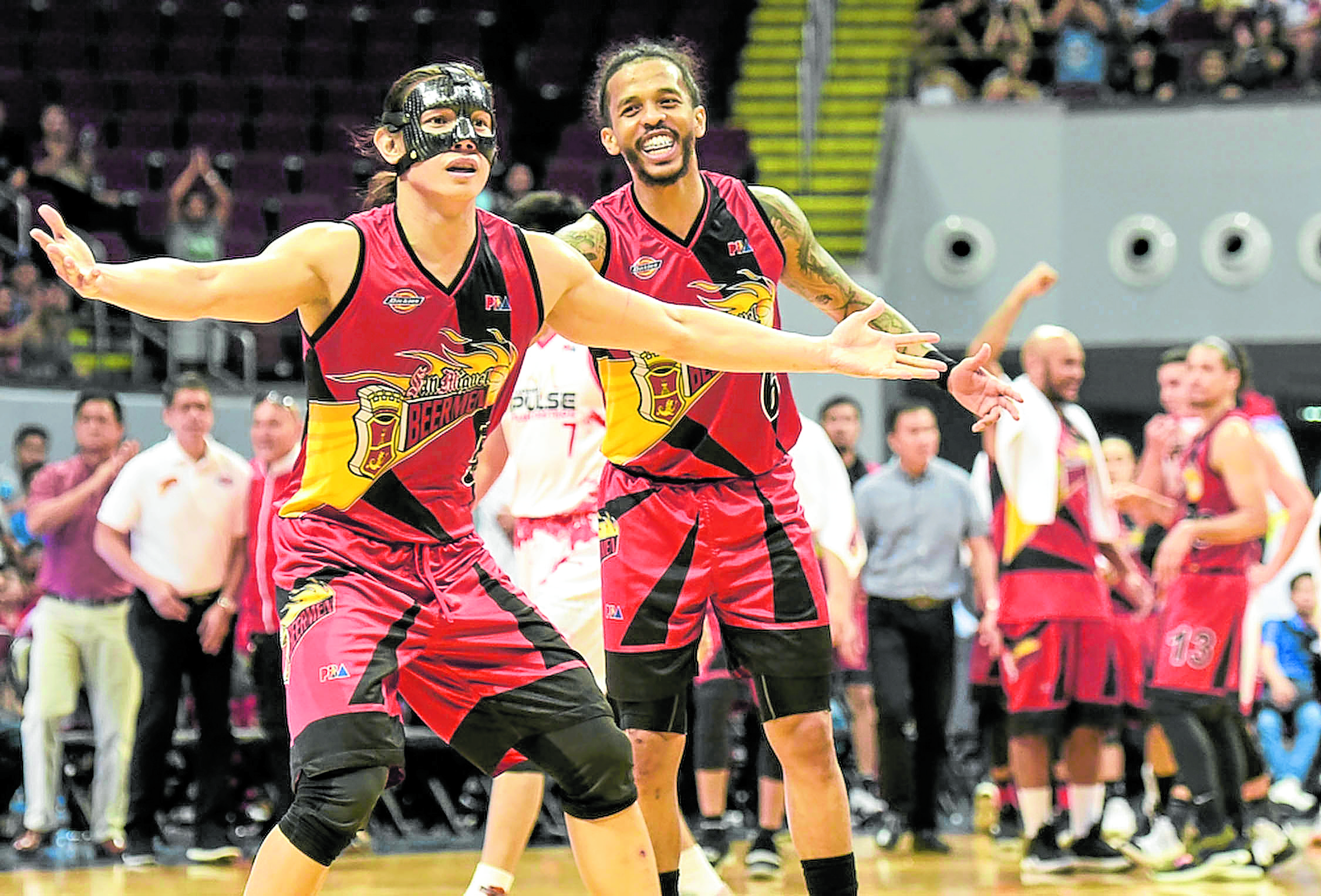San Miguel guard Alex Cabagnot has been carving out a remarkable career with nine championships so far that it’s easy to forget his past reputation as one of the most controversial players in the PBA more than a decade ago.
That past, however, was a major contribution to the wisdom and maturity he now possesses.
Now 37, Cabagnot said he owes his success to people who stuck with him even when his “ignorance” nearly cast him out of the league.
“I came into the PBA at 21,” Cabagnot said. “I was here very young, but there’s no excuse for ignorance for doing the wrong things. Coming into the league, you think everything is in the palm of your hands. But it isn’t.”
Cabagnot initially refused to sign a deal with Sta. Lucia then when the Realtors made him the No. 2 pick in the 2005 draft as the franchise added a performance clause in his contract.
After playing his rookie season, Cabagnot—even with a live contract—went Awol (absent without leave) and was seen in Los Angeles playing in a summer league game, before a threat of heavy sanctions, among other things, forced him to return and play again in the PBA.
No communication tools
“It was tough coming from the US just like any other rookie and there were none of these communication tools that we have now,” said the former University of Hawaii standout. “Sta. Lucia management understood that.”
Then Sta. Lucia governor and team manager Buddy Encarnado and former coach Alfrancis Chua were instrumental in putting Cabagnot on the right path.
Tough as it may seem, Encarnado then said he wanted to teach a young Cabagnot a lesson when he threatened to push for a lifetime ban as the point guard was about to renege on his contract with the Realtors.
“I did go through those. I’m not proud of it, but I’m glad I went through it because it made me a better player and a better person,” said Cabagnot, who has played for Coca-Cola and Globalport. “There were a lot of people who helped me especially my teammates Bitoy Omolon and Cesar Catli.”
Those early lessons come in handy as Cabagnot navigated the ups and downs of his career.
That he has played 15 years in the league, he said, is already a bonus considering the way he started his life as a PBA player.
“I think if you told me that I’d be here in the league 15 years later, you would have been joking,” Cabagnot said. “ My goal was to play for 10 years and I surpassed it. Everything else right now is a bonus. It’s been a wonderful ride.”

Alex Cabagnot has deferred a lot of his minutes to backcourt partner Chris Ross (right). —SHERWIN VARDELEON
Reinvention
And the ride hasn’t stopped. Cabagnot, in fact, has reinvented his game and is no longer the ball-dominant playmaker and gung-ho slasher he once was. Instead, he wisely picks his spots better and does more damage in the flow of the offense.
That was evident in last season’s Philippine Cup when he hit what turned out to be the title-clinching shot—a fade-away over Paul Lee off a pass from Chris Ross with 57 seconds left—in Game 7 of the finals.
“I’m just trying to be more efficient,” Cabagnot said. “One of the best things we did on this great run was to have Chris Ross on the floor more. We talked to coach [Leo Austria] that we needed to have him more on the floor so I’ll take a back seat for him. With that responsibility, I had to produce more as a shooting guard.”
And with Marcio Lassiter also excelling in that role, Cabagnot said he also has to adjust being pushed to the small forward position.
“I think winning championships makes you do unconventional things,” he said, noting the adjustments he has made in the last few years.
The result? With him figuring prominently in big games, the Beermen have won eight titles in the last six seasons.
Sacrifice
“We all sacrificed for each other it doesn’t just often come out of the media, but I think we’ve all just made sure that we gave way [to each other]. In Filipino culture, it’s all about pakisama.”
When you’re a part of a franchise with a winning tradition, Cabagnot said there’s no need to draw motivation from outside forces.
“We’ve come close to a Grand Slam twice,” Cabagnot said. “We’re all yearning to win. I think it’s an intrinsic motivation for us and the staff, under this organization. We don’t need any more external motivation.”

